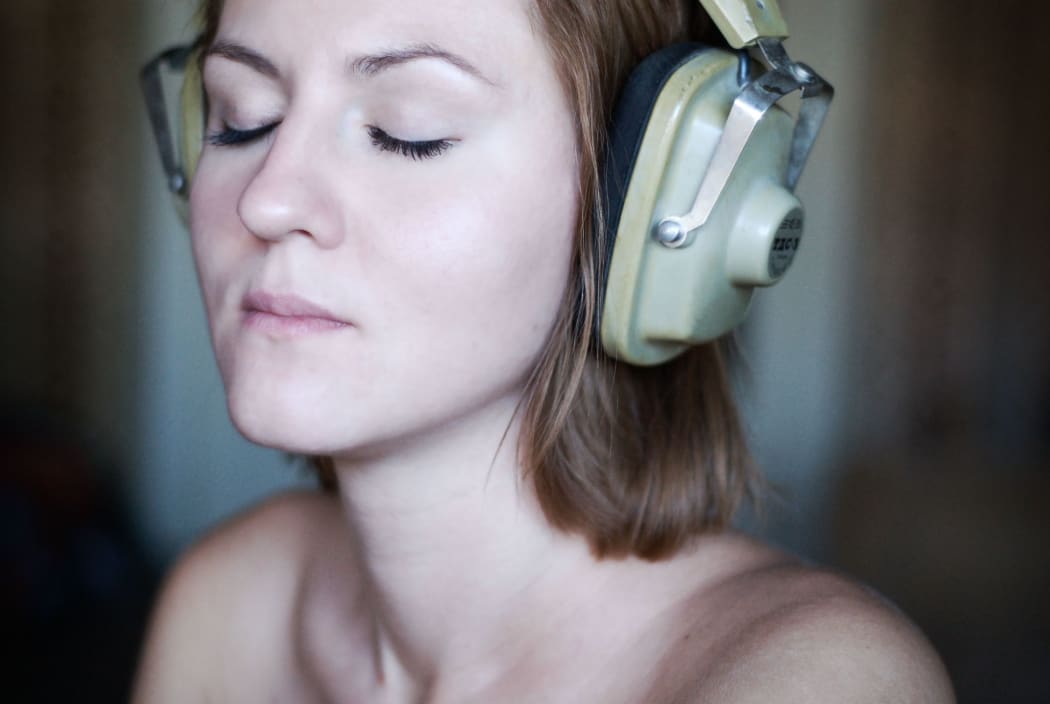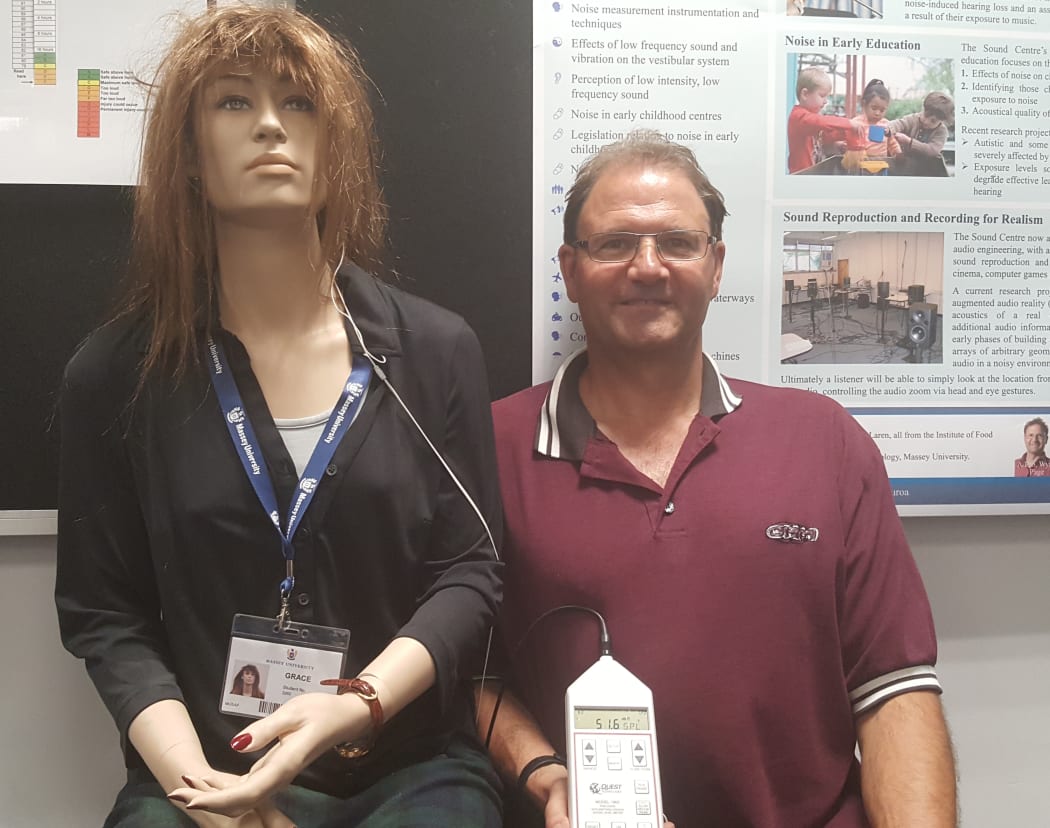How loud do you like your music? It turns out that the level at which some people listen to music on their headphones is the equivalent of standing 300 metres away from a large jet during take-off. And when your music is that loud, you’ve had your safe daily noise exposure after just one song.

Headphone use is exposing us to louder sounds for longer periods of time - and it's bad for our hearing. Photo: CC BY 2.0 Nickolai Kashirin
Wyatt Page is Associate Professor of Acoustics and Human Health in the School of Public Health at Massey University in Wellington.. He carries out acoustic research in a purpose-built Sound Lab, and is particularly interested in the impacts of noise on human health.
One of the first things you notice when you visit the lab is Grace, who is the Sound Lab’s audio assistant. Wyatt explains that she’s a mannequin that he uses to help educate people about the use of personal media players.
“One of the issues for generations X and Y is that they’ve grown up with an ability to listen to music all day,” says Wyatt. And he’s concerned that many people are listening to loud music for long periods of time on their headphones, which can result in damage to hearing.

Noise expert Wyatt Page sits next to the Sound Lab's assistant, known as Grace, who allows Wyatt to measure the loudness of audio being listened to on headphones. Photo: RNZ / Alison Ballance
Wyatt gets someone to select a favourite music track on their own personal media player, and to play it at their usual comfortable listening level. Then he connects Grace’s earbud headphones into that player, which allows him to precisely measure the listening volume.
He explains that Grace has anatomically correct ear canals with microphones located at their end.
“So we’re measuring it as if it were the sound level at your ear drum.”
Then, comparing that figure to the occupational noise exposure standards, he can tell the individual how long they can safely listen to their music without running the risk of damaging their hearing.
The current safe occupational noise exposure is no more than 85 decibels (Db) for 8 hours a day.. Wyatt explains that for every 3 Db increase in volume, you have to halve the safe listening time. So, for example, you can only listen at 88 Db for 4 hours, 2 hours at 91 Db and so on.
Wyatt tells the a story of a young man visiting the Sound Lab who listened to music so loudly that a single music track would have been his safe daily noise exposure.
“We were astonished,” says Wyatt. “He was listening at about 106 or 107 Db … and we said to him ‘you’ve probably already damaged your hearing’.”
By comparison,106 Db is as loud as a power mower, and 110 Db is the level at which many people are experiencing pain from the noise.
To make matters worse Wyatt points out that many people increase the volume they are listening at when they are in a noisy environment, such as on the street or on a bus. On average people turn the volume up by 7-9 Db, which reduces their safe listening time to just one hour a day.
Wyatt says it’s a matter of re-educating people to lower the volume they listen at, and reminding them that even though they might not notice it straight away, in five or ten years they will be experiencing irreversible hearing loss.
“We’ve got a group of people who are now in the 40s, who have the hearing of 65 year olds – and that’s principally attributable to personal media player use.”
Wyatt says that quiet time is very important. “Our hearing has the ability to recover,” he says.
His final caution is that we should value our hearing more - although hearing aids have improved over the years, he adds that “they are no substitute for protecting your hearing.”


